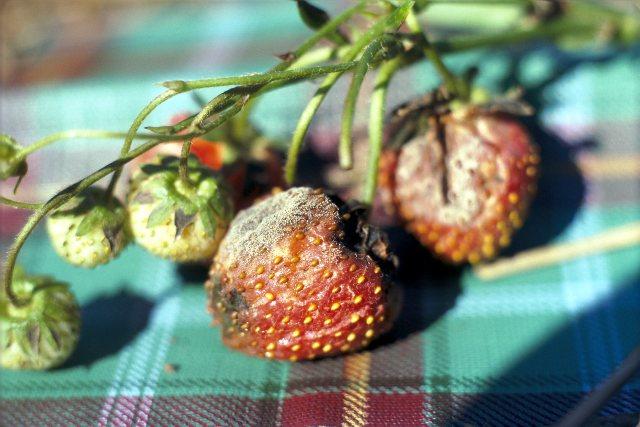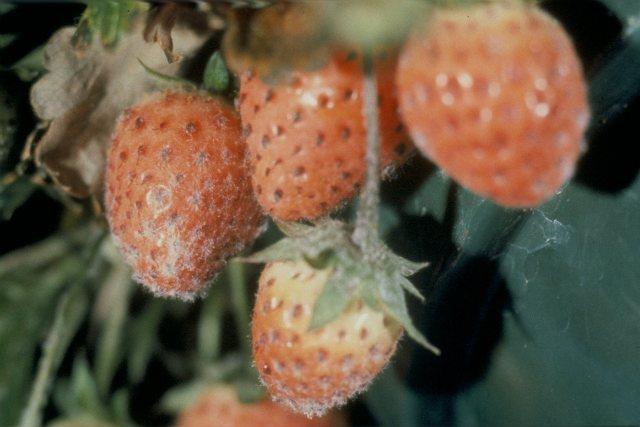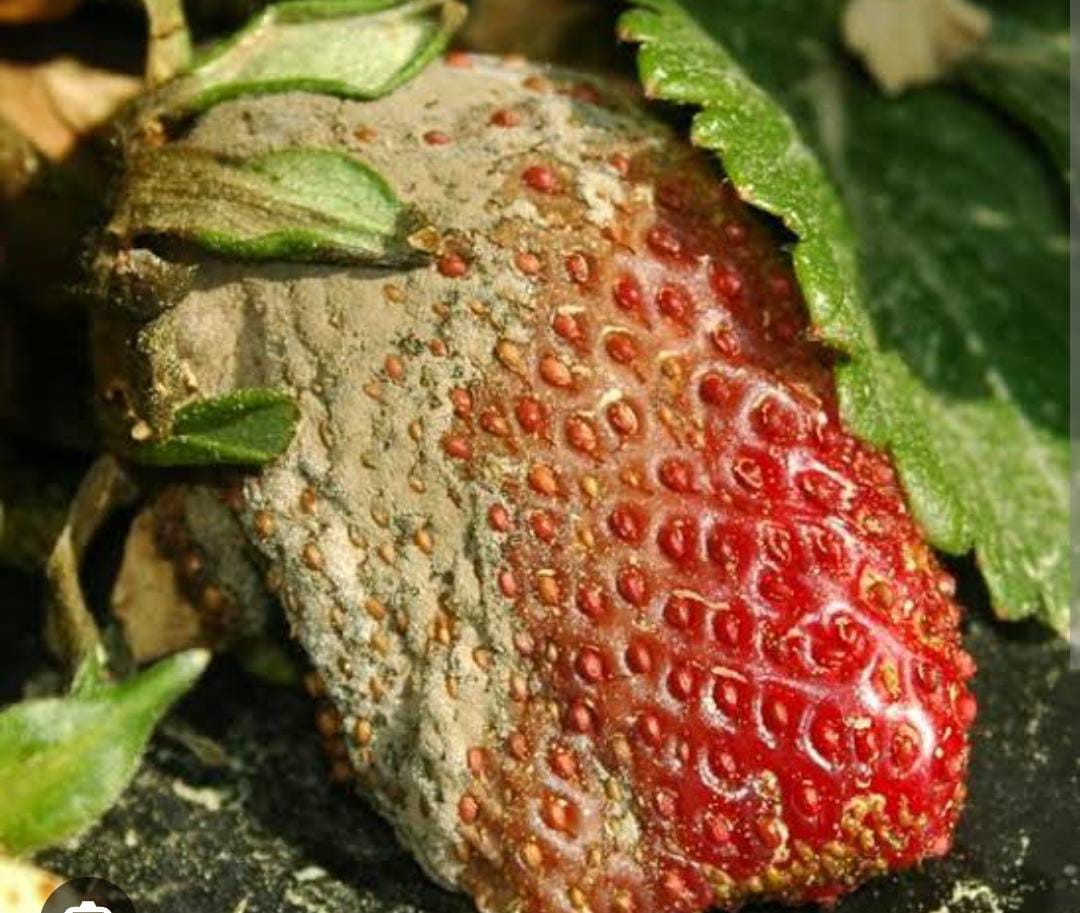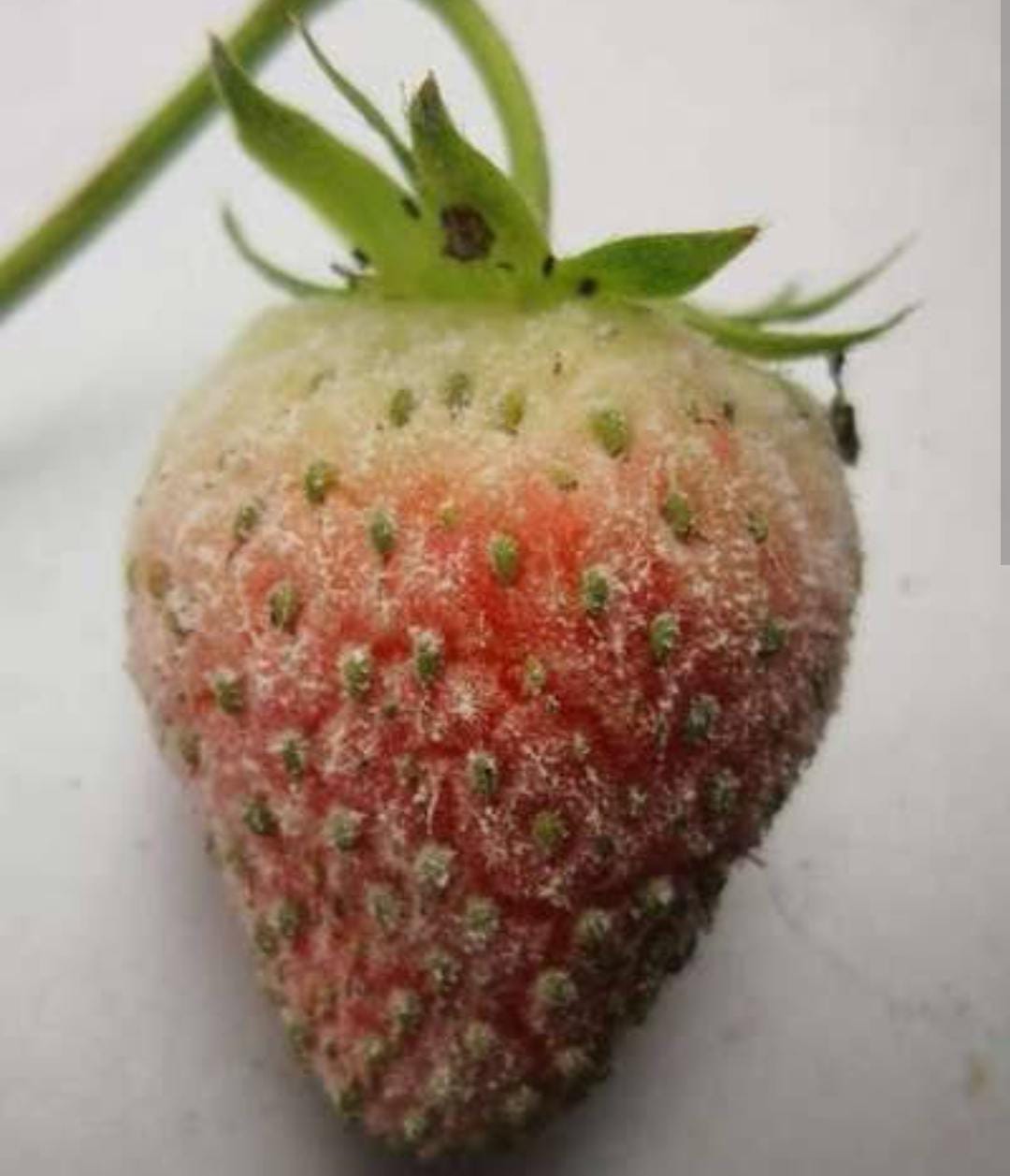Alpine Strawberry
Alpine strawberries, 6-12 inches in height and suitable for Zones 4-9, prefer well-drained soil under full sun. Known for their small and flavorful berries, alpine strawberries are a delightful addition to gardens.

Habit
Perennial
Height
6-12 in
Growth
Moderate
Soil
Well Drained
Shade
Full Sun
Moisture
Moderate
Edible
Yes
Medicinal
Yes
Origin
Europe
Climatic Condition
Temperate
Temperature (°)
15-25
Humidity (%)
60-70
Potting media
Peat+Perlite
Fertilizers
Balanced NPK(10:10:10)
Watering
Moderate, Water regularly
Plant Weight
30-50 g
Flowering Time
Spring to Summer
Soil Ph level
5.5-6.5
Water Ph level
6.0-7.0
Soil EC
1.0 dS/m
Yield Per Plant
2-3 berries per plant per week
NPK ratio
10:10:10
life Span
3-4 yrs
Health Benefits
Rich in Vitamin C
Suggested Grow Media or Potting Mix ?
50% peat moss, 30% compost, 20% sand
Suggested Fertigation/Fertilizers
Fertilize every 2 weeks with a balanced fertilizer.
Common Diseases and Remedies
Grey Mould Botrytis cinerea, Powdery Mildew.
Infection usually starts in the blossom and may destroy the entire blossom stalk. A white, powdery fungus growth may be seen on the underside of severely affected leaves.
Crop rotation, neem cake as soil amendment
HEALTH BENEFITS
Alpine strawberries, also known as Fragaria vesca, are a smaller and more intensely flavored variety of strawberry. They offer several health benefits:
- Rich in Antioxidants: They are packed with antioxidants like vitamin C, flavonoids, and phenolic compounds, which help protect the body from oxidative stress and support immune health.
- High in Fiber: Alpine strawberries provide a good amount of dietary fiber, which supports digestive health, helps regulate blood sugar levels, and can aid in weight management.
- Anti-inflammatory Properties: Due to their high levels of antioxidants, they have natural anti-inflammatory effects that may help reduce the risk of chronic diseases like heart disease and arthritis.
- Supports Heart Health: The antioxidants and fiber in Alpine strawberries may help reduce cholesterol levels and promote healthy blood vessels, contributing to cardiovascular health.
- Good Source of Vitamins and Minerals: In addition to vitamin C, they also contain essential vitamins such as vitamin A, B vitamins, and minerals like potassium and magnesium, which support overall health.
- Promotes Skin Health: The vitamin C content helps in collagen production, promoting healthy, youthful skin and preventing premature aging.
- Hydrating: With a high water content, they help in maintaining hydration levels, especially in warmer months.
Enjoying them fresh or in smoothies, desserts, and salads can help you reap these health benefits.
What Is An Alpine Strawberry Tree?
Alpine strawberry, also known as wild strawberry or forest strawberry, is a small, delicious variety of strawberry native to Europe and Asia. They are known for their rich, sweet taste and aroma.

What Are The Different Types Of Alpine Strawberry Plants?
1. 'Alexander' Strawberry
This variety produces small, sweet berries suitable for consumption fresh or used in jams and jellies. It is a plant very suitable for agriculture.
2. Fragaria vesca 'Ruegen'
Also called "Improved Ruegen", this variety produces large, juicy fruits with a sweet, aromatic flavour. It is a vigorous plant that is ideal for growing in soil or in containers.
3. Fragaria vesca 'Mignonette'
This species produces small, sharp fruits suitable for consumption fresh or used in desserts. It is a plant very suitable for agriculture.
4. Fragaria vesca 'Yellow Miracle'
This species produces small, yellow fruits with a sweet, tangy flavour. It is a vigorous plant that is ideal for growing in soil or in containers.
5. Strawberry 'Red Miracle'
This variety produces small, red berries with a sweet, tangy flavour. It is a vigorous plant that is ideal for growing in soil or in containers.
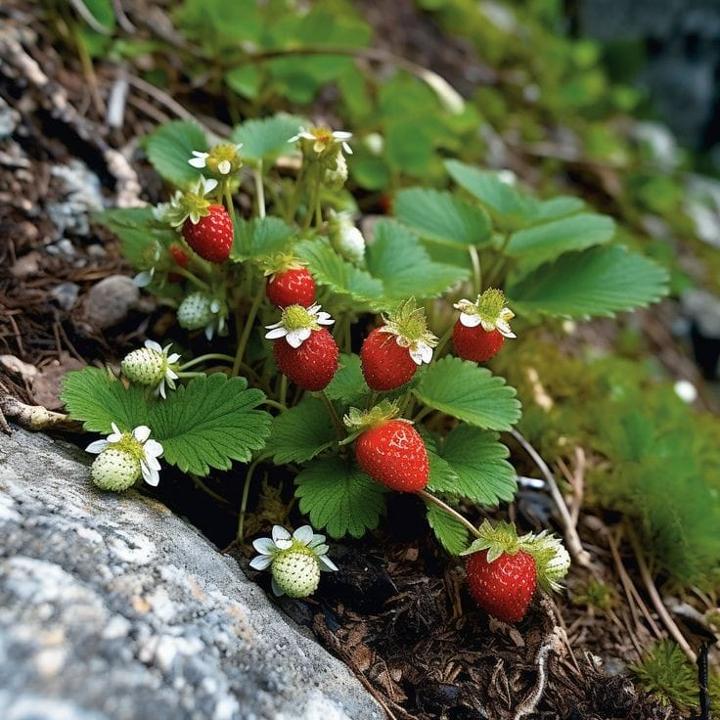
How to Care for Alpine Strawberry Plants ?
1. Location
Alpine strawberry (Fragaria vesca) is a versatile plant that can grow in many places, including: Alpine strawberries are ideal for container gardening. Use a pot that is at least 6 inches deep and has drainage. You can place the box on your patio, balcony or other sunny spot. If you have poor soil or want to create a growing area, consider growing wild strawberries in a raised bed. This will allow you to control the composition of the soil and the amount of water. If you live in a cold climate, you can grow wild strawberries in the greenhouse. This will provide the warmth and protection they need to thrive. Sometimes Alpine strawberries can be grown indoors. This is a great option if you have outdoor space or want to enjoy fresh strawberries year-round. Wherever you choose to plant your alpine strawberry, make sure it gets at least 6 hours of sunlight per day and the soil is well-drained. With proper care, you can have a large harvest of delicious strawberries.
2. Sunshine
Alpine strawberries (Fragaria vesca) thrive in full sun, which means they need at least 6 hours of direct sunlight per day. However, they can tolerate partial shade, especially in hot weather, and some evening shade will be beneficial. If you are growing wild strawberries at home or in a greenhouse, give them as much natural light as possible. You may need to supplement your grow lights to make sure they get enough light to produce fruit. In summary, although wild strawberries like full sun, they can tolerate partial shade, especially in hot weather.
3. Soil
Alpine strawberry (Fragaria vesca) prefers well-drained soil with a slightly acidic pH of 5.5 to 6.5. They grow best in soil rich in organic matter, such as compost or well-rotted manure. If your soil is too alkaline, you can lower the pH by adding peat moss, pine needles or sulphur. If your soil is too acidic, you can raise the pH by adding lime or wood ash. Alpine strawberries can also be planted in containers with a good mix. Make sure the container has a drain to prevent water from pooling. In summary, Alpine strawberries like well-drained soil with slightly acidic pH between 5.5 and 6.5. If your soil is less than ideal, you can amend it to create a better growing environment for your plants.
4. Hydration
Alpine strawberry (Fgararia vesca) likes regular soil but does not like waterlogging. Water wild strawberries regularly, especially during dry periods, to keep the soil evenly moist. When watering, focus on the bottom of the plant rather than the top to avoid wetting the leaves, which will cause fungal diseases. Mulching around plants with straw or wood chips can help retain moisture and reduce the need for frequent watering. In summary, wild strawberries like normal soil but do not like ice. Water around the base of the plant and mulch around the plant to help retain moisture.
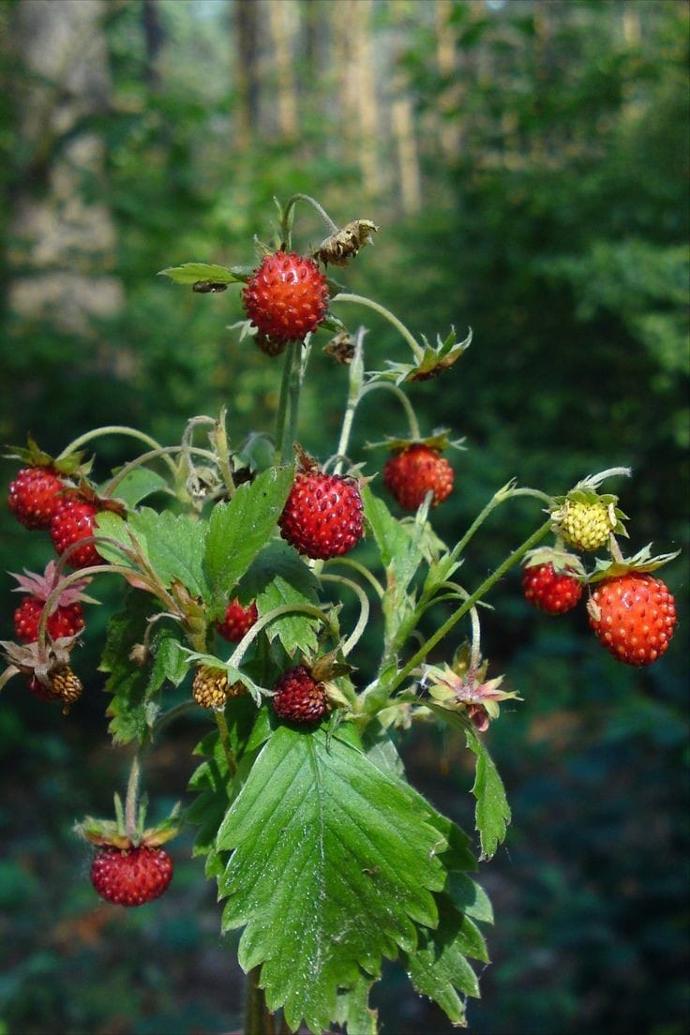
5. Nourishment
Alpine strawberry (Fragaria vesca) does not need a lot of fertilizer, but will benefit from a balanced fertilizer (such as 10-10-10) once or twice during the growing season. Use fertilizer according to manufacturer's instructions and avoid over-fertilizing as this will cause the leaves to grow too much, which can affect fruit. In addition to fertilizers, wild strawberries can also benefit from a layer of compost or well-rotted manure used around the base of the plant. This will help improve the soil structure and ensure a slow release of nutrients. As a result, wild strawberries do not need a lot of fertilizer but will benefit from a fertilizer balance once or twice during the growing season. Apply fertilizer according to manufacturer's instructions and consider adding compost or well-rotted compost to improve soil structure and provide additional nutrients.
6. Issues
Alpine strawberries (Fragaria vesca) are easy to grow, but like all plants they are subject to a variety of problems. Here are some of the problems you may encounter when growing alpine strawberries and how to solve them: Pests affecting alpine strawberries include slugs, snails, aphids and spider mites. You can use chemical pesticides, neem oil, or other organic pest control methods to control these pests. You can try using a physical barrier, such as copper tape, to keep slugs and snails away from your plants. Alpine strawberries are sensitive to high temperatures, drought and excessive humidity. To protect your plants from environmental stress, make sure they receive at least 6 hours of sunlight per day, water regularly, and provide some shade during hot weather. By solving these problems you can help your wild strawberries thrive and be productive.
What are the Benefits of Alpine Strawberry ?
Alpine strawberry (Fragaria vesca) has many advantages in terms of ornamental and culinary value: Alpine strawberry is a beautiful plant that produces white flowers and small, delicious fruits. They can be grown in garden beds, containers, hanging baskets and even indoors, making them a versatile and beautiful addition to any garden or home. Alpine strawberries produce small, sweet berries with rich flavour. It can be eaten fresh, added to salads or used in jams, jellies and desserts. They also contain vitamins C and K and antioxidants. Alpine strawberries are easy to grow and require little maintenance. They are hardy plants that can tolerate many soil types and are resistant to many pests and diseases. Alpine strawberries are perennial plants, which means they will re-emerge every year. This makes them a more durable and long-lasting addition to your garden. Alpine strawberry flowers attract bees and other pollinators, which helps with pollination in the garden. All in all, wild strawberry is a versatile and useful plant that adds beauty and flavour to your garden or home.

FAQs About Growing Alpine Strawberry
1. How to maintain Alpine strawberry plants?
Processing alpine strawberries (Fragaria vesca) involves several important steps to ensure they are healthy and productive: Help retain moisture and reduce weeds by mulching around alpine strawberries with straw or sawdust. This will also help protect the plant from heat and cold. Remove dead or yellow leaves and stumps close to the parent plant. This will help improve air circulation and reduce the risk of disease. Monitor for pests such as slugs, snails, aphids and spider mites, as well as diseases such as powdery mildew and grey mould. Treat any problems immediately with a suitable insecticide or fungicide. In cold weather, protect wild strawberries from frost by covering them with a layer of mulch or bringing them indoors. This will help them survive the winter and gain strength in the spring.
2. What are the uses of Alpine strawberry plants?
You can help your wild strawberries thrive and be productive by following these care tips. Alpine strawberry (Fragaria vesca) has many culinary and ornamental uses: The main use of the Alpine strawberry is its delicious, sweet and aromatic fruits. These fruits can be eaten fresh, added to salads or used in jams, jellies and desserts. They also contain vitamins C and K and antioxidants. Alpine strawberry is an attractive plant that produces white flowers and small, delicious fruits. They can be grown in garden beds, containers, hanging baskets and even indoors, making them a versatile and beautiful addition to any garden or home. Alpine strawberries can be used as ground cover in garden beds or in pots. Their low growth habit and spreading characteristics help kill weeds and provide a green carpet to your garden. All in all, wild strawberry is a versatile and useful plant that adds beauty and flavour to your garden or home.
3. Can I grow Alpine strawberry plants indoor?
Yes, Alpine strawberries (Fragaria vesca) can be grown indoors.
4. What is the best pot for growing Alpine Strawberries ?
Choose a pot that is at least 6 inches deep and 12 inches in diameter. This will provide enough room for the plant to grow and expand. Make sure the pot has a well to prevent water from rotting the roots. You can add a layer of stones or broken pottery to the pelvic floor to improve drainage. Pots made of plastic, ceramic or clay are suitable for growing Alpine strawberries. Plastic pots are lightweight and easy to transport, while ceramic and terracotta pots are more attractive. Dark coloured pots absorb more heat, which is especially good for wild strawberries in cold weather. However, in hot weather, lighter coloured pots may be better at preventing overheating. Alpine strawberries have shallow roots, so a wider, shallower pot is more suitable than a tall, narrow pot. In general, the best pot for growing wild strawberries is one that is large, has good drainage, and is made of materials that suit your climate and preferences.
5. From where I can buy Alpine strawberry plants ?
You can purchase Alpine strawberry plants from a variety of places, including:
Many local nurseries and gardens grow wild strawberry plants, especially during the spring and summer months. There are many online retailers that sell wild strawberry plants, including Amazon, Etsy, and specialty nurseries. Some seed companies also sell wild strawberry seeds that you can grow into plants. When purchasing Alpine strawberry plants, look for healthy plants with green leaves and no diseases or pests. If you are going to buy seeds, make sure they are fresh and from a reliable source.
